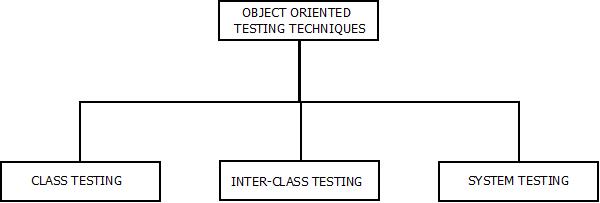Object Oriented Testing : Introduction
- Whenever large scale systems are designed, object oriented testing is done rather than the conventional testing strategies as the concepts of object oriented programming is way different from that of conventional ones.
- The whole object oriented testing revolves around the fundamental entity known as “class”.
- With the help of “class” concept, larger systems can be divided into small well defined units which may then be implemented separately.
- The object oriented testing can be classified as like conventional systems. These are called as the levels for testing.
Object Oriented Testing : Levels / Techniques
- The levels of object oriented testing can be broadly classified into three categories. These are:

Object Oriented Testing : Techniques
-
Class Testing
- Class testing is also known as unit testing.
- In class testing, every individual classes are tested for errors or bugs.
- Class testing ensures that the attributes of class are implemented as per the design and specifications. Also, it checks whether the interfaces and methods are error free of not.
-
Inter-Class Testing
- It is also called as integration or subsystem testing.
- Inter class testing involves the testing of modules or sub-systems and their coordination with other modules.
-
System Testing
- In system testing, the system is tested as whole and primarily functional testing techniques are used to test the system. Non-functional requirements like performance, reliability, usability and test-ability are also tested.